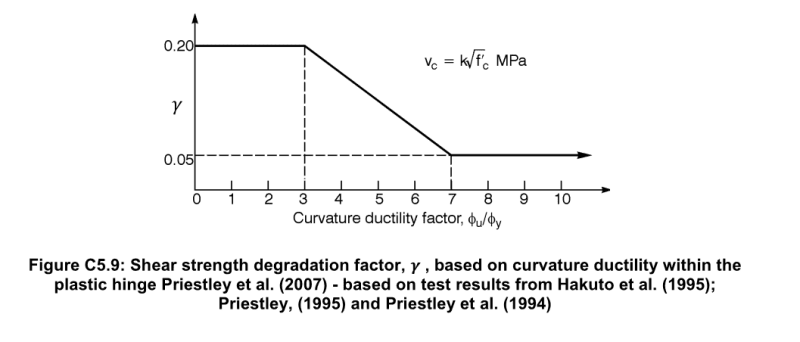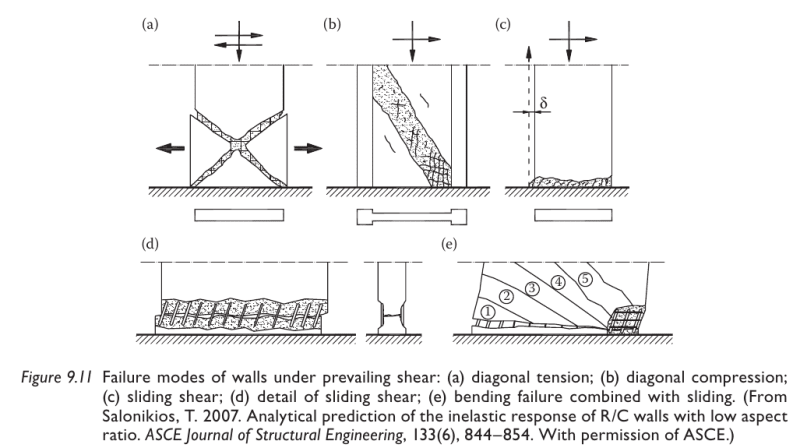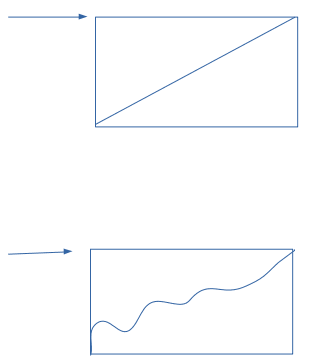hardbutmild
Structural
- Aug 10, 2019
- 294
Hello,
this is my first post, I usually watch other threads and find most of the answers so thank you for that.
My question is does anyone here know where the expressions for diagonal compressive failure of concrete come from?
To clarify, I'm talking about the maximum shear resistance that an element can have before the diagonal strut fails under compression, in eurocode it's denoted as VRd,max.
Now, I do know how to get the expression from some basic statics and geometry, but I want to check how the actual experiments to confirm it were done. I want to do this because I think that the expression is valid only for elements with low ductility. Here is my reasoning behind it. In the standard procedure you basically check the strut for failure and it should be the same at any point on the strut, but at the point where the strut connects with the compression area (caused by bending) a 2D stress field occurs. In other words, if bending causes large stresses in compression area, at that point less diagonal stresses can be transferred (basically I check main stresses and not just normal and shear independently).
Why do I care for all this? Well, because of walls in earthquake. Eurocode 8 states that you should reduce this strength to 40% (that's 2,5 times reduction!) of it's basic value for high ductility class DCH (EN 1998-1 section 5.5.3.4.2 if you want to check), but no reduction for medium ductility. Further they say that this is "due to dynamic nature of the loading", but the dynamic nature is present in both ductility classes and usually tests are made by static pushing of the wall so it makes more sense that it's due to ductility.
I'm trying to figure out what really happens because this reduction is HUGE, this strength can not be increased by adding reinforcement and shear failure is non-ductile and should be avoided at all cost. It just feels very important.
I'm sorry if this is not coherent, too long or if I posted it in the wrong place. I can provide way more explanations if needed but I didn't want to put too much in the first post.
If you can give any insight into anything related to this I'd be very grateful, thank you!
this is my first post, I usually watch other threads and find most of the answers so thank you for that.
My question is does anyone here know where the expressions for diagonal compressive failure of concrete come from?
To clarify, I'm talking about the maximum shear resistance that an element can have before the diagonal strut fails under compression, in eurocode it's denoted as VRd,max.
Now, I do know how to get the expression from some basic statics and geometry, but I want to check how the actual experiments to confirm it were done. I want to do this because I think that the expression is valid only for elements with low ductility. Here is my reasoning behind it. In the standard procedure you basically check the strut for failure and it should be the same at any point on the strut, but at the point where the strut connects with the compression area (caused by bending) a 2D stress field occurs. In other words, if bending causes large stresses in compression area, at that point less diagonal stresses can be transferred (basically I check main stresses and not just normal and shear independently).
Why do I care for all this? Well, because of walls in earthquake. Eurocode 8 states that you should reduce this strength to 40% (that's 2,5 times reduction!) of it's basic value for high ductility class DCH (EN 1998-1 section 5.5.3.4.2 if you want to check), but no reduction for medium ductility. Further they say that this is "due to dynamic nature of the loading", but the dynamic nature is present in both ductility classes and usually tests are made by static pushing of the wall so it makes more sense that it's due to ductility.
I'm trying to figure out what really happens because this reduction is HUGE, this strength can not be increased by adding reinforcement and shear failure is non-ductile and should be avoided at all cost. It just feels very important.
I'm sorry if this is not coherent, too long or if I posted it in the wrong place. I can provide way more explanations if needed but I didn't want to put too much in the first post.
If you can give any insight into anything related to this I'd be very grateful, thank you!






